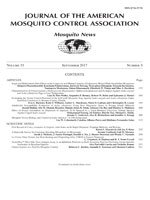The 27th Annual Latin American Symposium presented by the American Mosquito Control Association (AMCA) was held as part of the 83rd Annual Meeting of the AMCA in San Diego, CA, in February 2017. The Latin American Symposia promote the participation of vector control specialists, public health workers, and academicians from Latin America and the sharing of data between continents. Generally, presentations are in Spanish and simultaneously translated in English, although the majority of PowerPoint slides are in English so all meeting attendees can understand the content. This publication includes summaries of 23 oral presentations by participants from Brazil, Colombia, Mexico, Puerto Rico, and the USA. Topics addressed in the symposium included surveillance, operations and response thresholds/planning, mosquito ecology, insecticide resistance, and population control via chemicals, natural products, and biological control. Sterile insect technique protocols were explored regarding larval rearing diets and the use of microRNAs. Presentations were related to vectors including Aedes, Culex, and Anopheles mosquitoes, which can transmit malaria, dengue, chikungunya, and Zika, and Lutzomyia phlebotomine sand flies, the key vectors of leishmaniasis.
How to translate text using browser tools
1 September 2017
Mosquito Vector Biology and Control in Latin America—A 27th Symposium
Lee W. Cohnstaedt,
Catalina Alfonso-Parra,
Ildefonso Fernandez-Salas
ACCESS THE FULL ARTICLE
It is not available for individual sale.
This article is only available to subscribers.
It is not available for individual sale.
It is not available for individual sale.
Aedes
Anopheles
Culex
dengue
insecticide resistance
mosquito control
Phlebotomine sand flies





